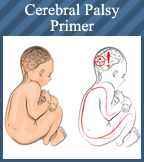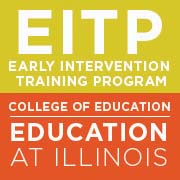Described since ancient times, cerebral palsy (CP) is the leading cause of childhood disability affecting function and development with a worldwide incidence being 2 to 2.5 per 1000 live births; males are affected slightly more than females, in a 1.2:1 ratio. CP is a static, permanent, non-progressive, chronic and global neurologic condition resulting from brain injury, mostly to white matter structures within the developing brain.
White matter disorders have also been found for attention deficit hyperactivity disorder (ADHD), dyslexia, and autistic spectrum disorders, and under the aegis of this schematic paradigm can be viewed as the middle portion of the spectral continuum of white order abnormalities in young children. Indeed, increased prevalence of progressive developmental disorder or autism is associated with concurrent diagnosis of cerebral palsy.
Having a multifactorial etiology from an initiating brain injury to the fetus or infant – harm can occur anytime between prenatal development and age 3 years – CP often manifests as early hypotonia for the first 6 months to 1 year of life, followed by spasticity. Synonymous with the term “static encephalopathy” (i.e., nonprogressive in nature) CP is a continuum of motor dysfunction, which may range from slight clumsiness at the mild end of the spectrum to impairments so severe that they render coordinated movement virtually impossible at the other end of the spectrum.
The clinical manifestations of cerebral palsy fall on a continuum of motor dysfunction, which may range from slight clumsiness at the mild end of the clinical spectrum – described as minimal cerebral palsy (-known as developmental coordination disorder or DCD) on the low end of the continuum to severe impairments – classic cerebral palsy – with common signs and symptoms including lagging motor development, cognition, persistent infantile reflex, hyperreflexia, and altered muscle tone – the most frequently observed symptom. Diagnosis of exclusion, must occur prior to two years or according to some experts – no later than 3 years.
In a people-first approach, CP is managed by a comprehensive team involving all early intervention specialists, and other experts. The goals for children suffering from CP are to develop maximal independence within the limits of their motor and associated deficits. Given appropriate management, especially those children with spastic paraplegia or hemiplegia, may lead near-normal lives. A compassionate approach emphasizes the child, not the disability. A life with cerebral palsy is a life well worth living!
Learn about the signs & symptoms as well as management from the perspective of physical & occupational therapy speech language pathology, nutrition, social work and special education, and how proactive intervention enables these children to achieve their full potential.
Packed with visuals and diagrams, this course is thorough and well presented, with a positive tone, and excellent ‘functionality’ of material for the early intervention professional. This eclectic primer is a MUST READ for all early intervention and pre-school therapists who service the professional needs of the infant, toddler, and child with cerebral palsy.
Sign up Now!

This program is offered for 0.55 ASHA CEU's (Introductory Level, Professional)
ASHA LEARNERS PLEASE NOTE: There are 2 purchase options above, EI Continuing Education and CEU. If you wish to earn ASHA CEUs for this course and you select the CEU option, your information including name, address, e mail and ASHA ID, will be sent to ASHA CE. If you do not want your information sent to ASHA, please select the option for continuing education. Learner must achieve a passing score of 75% on the post course examination in order to meet satisfactory completion requirements.

EITTOC is an AOTA Approved Provider of professional development. Course approval ID# 8922. This distance learning-independent is offered at 0.55 CEUs, introductory, OT service delivery/foundational knowledge. The assignment of AOTA CEUs does not imply endorsement of specific course content, products, or clinical procedures by AOTA or indicate AOTA approval of a certification or other professional recognition.
- Meets NY State (NYSOTA) Continuing Compliancy Requirements for continued Core Competency Hours (CCH) –
APPROVED BY THE ILLINOIS EARLY INTERVENTION TRAINING PROGRAM FOR EARLY INTERVENTION CREDENTIAL CREDIT for 5.0 Hours
- Approved by the National Association of Social Workers (NASW) -
Disclosure: David C Saidoff PT - course developer/presenter - has the following relevant financial relationships to disclose: he receives monetary compensation for the preparation of this course, in addition to a percentage of company sales, and has the following relevant non-financial relationships to disclose: EITTOC Board of Directors: volunteer member. Melissa Whelan, OTR - course developer/presenter - has the following relevant financial relationships to disclose: she receives monetary compensation for the preparation of this course, in addition to a percentage of company sales, and has the following relevant non-financial relationships to disclose: EITTOC Board of Directors: volunteer member.Dr. Robert Koppel, M.D.,FAAP, Diplomate of the American Board of Pediatrics has the following relevant financial relationships to disclose: he receives monetary compensation for the preparation of this course, in addition to a percentage of company sales, and has the following relevant non-financial relationships to disclose: EITTOC Board of Directors: volunteer member. Declaration: Approval of this course does not necessarily imply that any of the governing bodies (e.g., West Virginian Board of Physical Therapy, or other such governmental or NGO’s supports the views of the presenter or sponsor. Information provided should be used within the scope of practice. No relevant financial or non-financial relationships exists between EITTOC or the products discussed any course; no such relationship or endorsement exists for any products mentioned in any courses sponsored by EITTOC, or in any of the items (such as specific AED or Epinephrine injection product) or any testing instrument used to evaluate children; the above course is specific to said-topic, and may not be extrapolated to any other course or topic outside the scope of this course. Course instructor(s) have no other financial or non-financial remuneration - whether prior to or following course delivery; the above advertisement is made available to all physical therapy (and other) licensee on a non-discriminatory basis. Ascend has approved this course and may be contacted about any concerns. Information provided should be used within scope of practice. AOTA does not endorse specific course content, products, or clinical procedures. The onus of responsibility for this course – granted contact hours by the AOTA – is for each OT professional to check with their State board of OT to see if this course meets licensure requirement for continuing education. AOTA does not endorse specific course content, products, or clinical procedures. |









